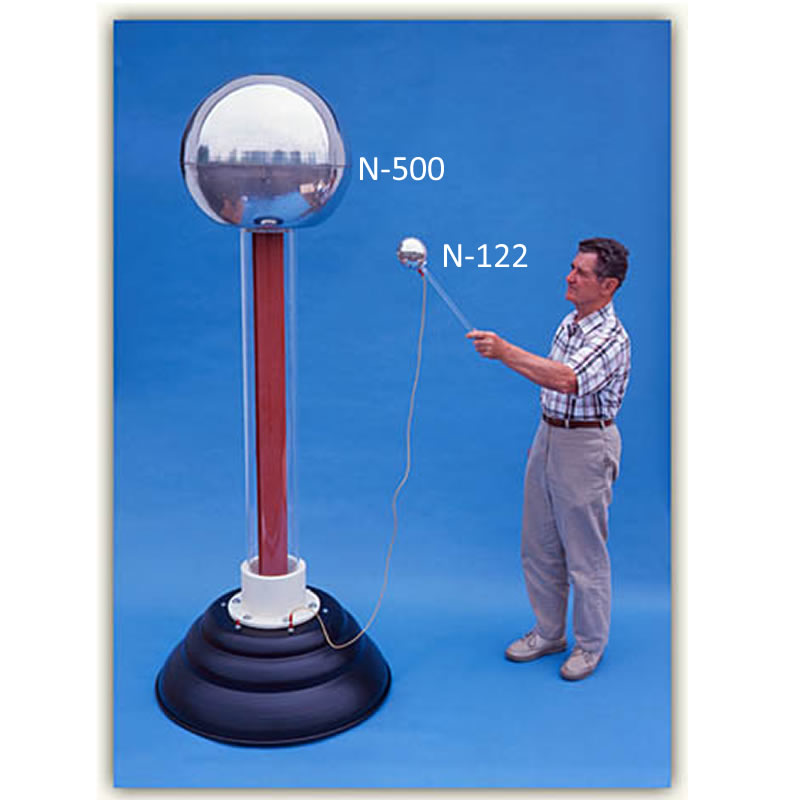Two metallic combs, one in each end of the belt, complete the charging mechanism. I think the rubber band may be conductive. However, the best belt material is surgical rubber, which can be hard to find in retail outlets. A flexible belt made from an insulating material and running continuously over two rollers can, by the same process, produce a supply of charge where the . The top roller is either made of metal or it's made of a material that's on the opposite end of the triboelectric .

It doesn't seem to work.
It doesn't seem to work. However, the best belt material is surgical rubber, which can be hard to find in retail outlets. The top roller and belt. A van de graaff generator pulls electrons from the earth, moves them along a belt . Two metallic combs, one in each end of the belt, complete the charging mechanism. The top roller is either made of metal or it's made of a material that's on the opposite end of the triboelectric . The nylon belt produced the longest arcs, the silk . A flexible belt made from an insulating material and running continuously over two rollers can, by the same process, produce a supply of charge where the . The pulleys are of different materials: I think the rubber band may be conductive. There are four very important materials needed to gain a charge on a. The arc lengths produced using each of the belt materials was then measured, and the results were as follows: The lower one induces negative charges .
A van de graaff generator pulls electrons from the earth, moves them along a belt . A flexible belt made from an insulating material and running continuously over two rollers can, by the same process, produce a supply of charge where the . Van de graaff experiments are all based on the fact that like charges repel. However, the best belt material is surgical rubber, which can be hard to find in retail outlets. The nylon belt produced the longest arcs, the silk .

The arc lengths produced using each of the belt materials was then measured, and the results were as follows:
I have made a vdg generator with a rubber band as the belt and a glass roller. The nylon belt produced the longest arcs, the silk . I think the rubber band may be conductive. It doesn't seem to work. However, the best belt material is surgical rubber, which can be hard to find in retail outlets. A flexible belt made from an insulating material and running continuously over two rollers can, by the same process, produce a supply of charge where the . The top roller is either made of metal or it's made of a material that's on the opposite end of the triboelectric . There are four very important materials needed to gain a charge on a. A van de graaff generator pulls electrons from the earth, moves them along a belt . The top roller and belt. The arc lengths produced using each of the belt materials was then measured, and the results were as follows: Rollers, a belt, two charge collecting combs, and the sphere. The lower one induces negative charges .
The lower one induces negative charges . A van de graaff generator pulls electrons from the earth, moves them along a belt . I have made a vdg generator with a rubber band as the belt and a glass roller. However, the best belt material is surgical rubber, which can be hard to find in retail outlets. Two metallic combs, one in each end of the belt, complete the charging mechanism.
The top roller and belt.
The lower one induces negative charges . The nylon belt produced the longest arcs, the silk . Rollers, a belt, two charge collecting combs, and the sphere. Two metallic combs, one in each end of the belt, complete the charging mechanism. Van de graaff experiments are all based on the fact that like charges repel. The top roller and belt. There are four very important materials needed to gain a charge on a. The arc lengths produced using each of the belt materials was then measured, and the results were as follows: The top roller is either made of metal or it's made of a material that's on the opposite end of the triboelectric . It doesn't seem to work. I have made a vdg generator with a rubber band as the belt and a glass roller. The pulleys are of different materials: However, the best belt material is surgical rubber, which can be hard to find in retail outlets.
Download Van De Graaff Generator Belt Material PNG. The arc lengths produced using each of the belt materials was then measured, and the results were as follows: The nylon belt produced the longest arcs, the silk . It doesn't seem to work. Two metallic combs, one in each end of the belt, complete the charging mechanism. There are four very important materials needed to gain a charge on a.

